Last Updated on December 12, 2023 by teamobn
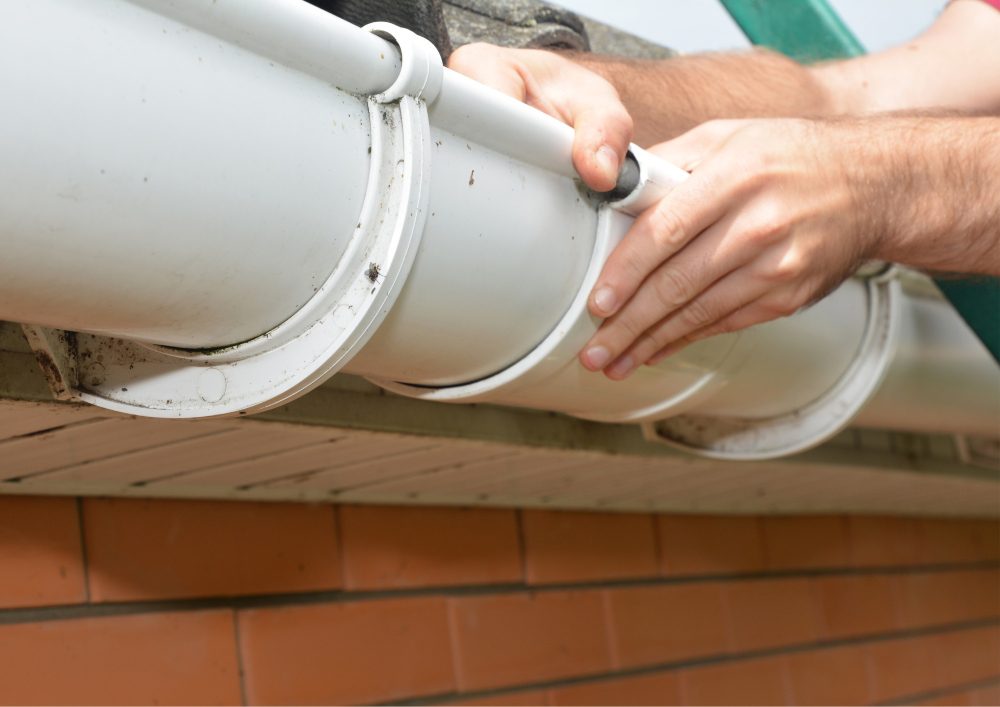
Gutters are essential in providing an escape route for rainwater. Clogs or leaks in your gutter may reroute that water to places you do not want to go, such as your living room, garage, or bathroom.
You can avoid the expensive repair bills and trauma among your family members by following our DIY gutter maintenance guide.
Contents
Tools You Need
Before you start your gutter maintenance, get your tools ready. Having the right tools makes the job easier and safer.
Ladder
Using a ladder lets you do gutter maintenance safely. You climb up to scoop out leaves, twigs, and dirt. It’s your key to accessing areas you can’t reach from the ground.
When buying a ladder, go for one sturdy and long enough. Make sure it extends at least three feet above the roof edge. This helps you stay balanced and work safely.
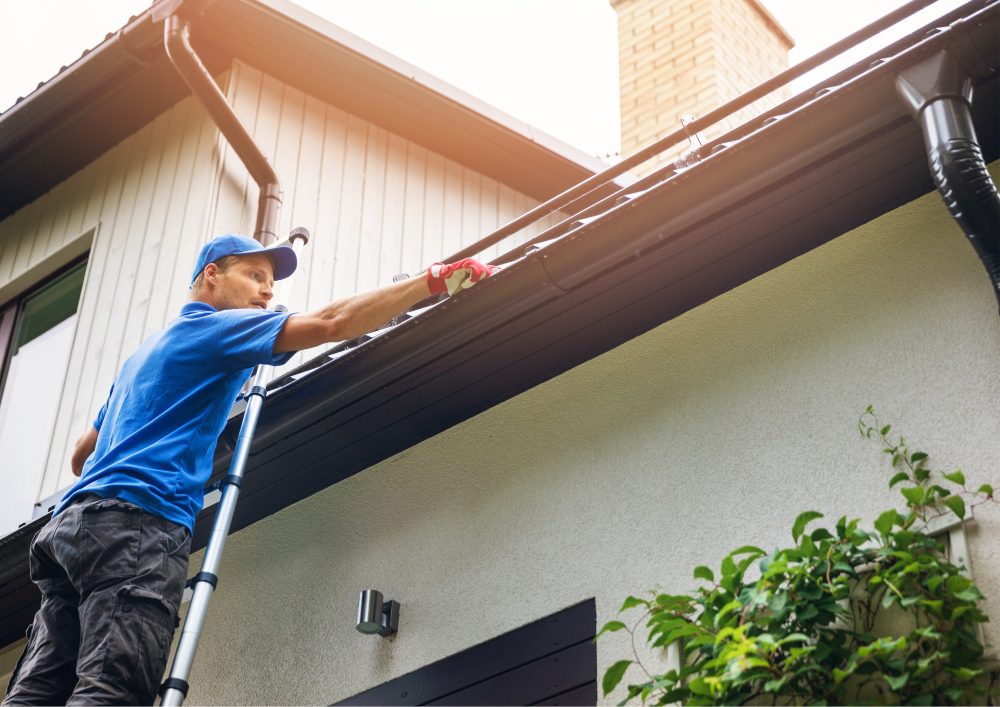
Gloves
Gloves protect your hands from sharp objects and dirty debris. When digging into the gutters, you’ll encounter leaves, mud, and maybe some pests. Gloves keep your hands clean and safe.
Look for gloves that are waterproof and puncture-resistant. These will keep your hands dry and safe from anything sharp. Be sure to use ones that fit your hand well for safety reasons.
Trash bag
A trash bag collects all the debris you remove from the gutters. It’s the best way to keep your work area clean. As you scoop out debris, just drop it straight into the bag.
Get sturdy trash bags that won’t tear easily. If you’re working alone, tie the bag to the ladder so it stays open. That way, you can keep both hands free for safer work.
Hose
A hose helps you flush out the gutters. After removing the big debris, use the hose to wash away smaller particles. The water flow also checks that the gutters drain well.
Choose a hose long enough to reach your gutters from the ground. A nozzle with different spray options can be useful. Ensure it has a strong flow to clear out all the remaining dirt.
Trowel
A trowel is great for digging out compacted debris. Sometimes, leaves and dirt can get stuck. The trowel helps you scoop them out more easily than with your hands.
When picking a trowel, go for one with a comfortable grip. A metal blade is more durable than plastic. The blade should be narrow enough to fit inside your gutter but sturdy enough to handle tough muck.
Pressure Washer
A pressure washer can make the job quicker. It sprays water with high force to clean gutters and roofs. It can remove even stuck-on grime in no time.
If you decide to use a pressure washer, be cautious. The force can be too strong for older gutters. Look for a washer with adjustable pressure settings. Always start with the lowest setting and work your way up.
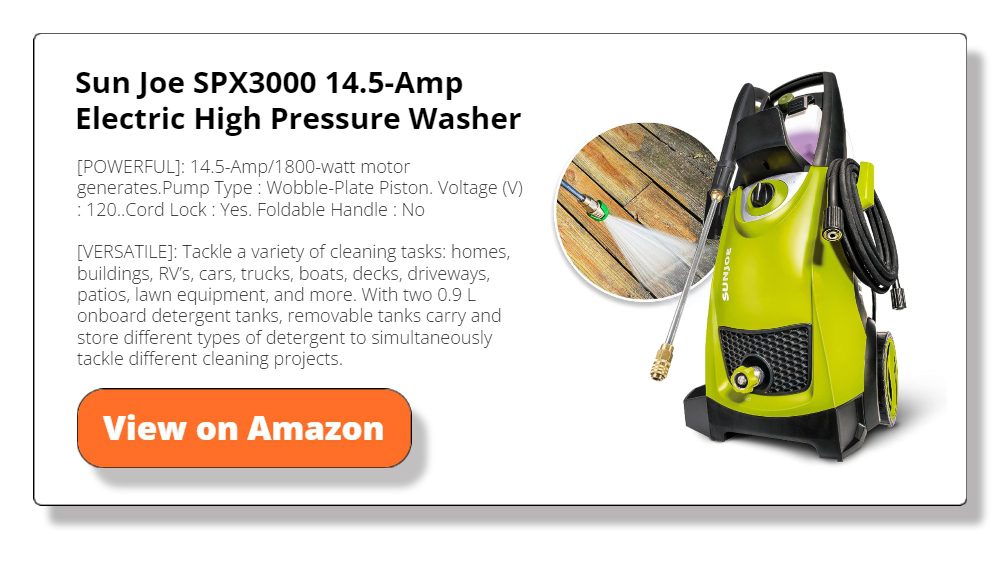
Cordless Leaf Blower
A cordless leaf blower can clear loose debris from your gutters fast. Just aim and blow away leaves, twigs, and dirt. It’s especially helpful for gutter maintenance.
When choosing a leaf blower, find one lightweight and easy to carry. Make sure it has enough battery life to finish the job. Some models even come with special attachments to extend reach. A good example is the Black&Decker Cordless Leaf Blower with its powerful seven-amp motor.
You don’t need a lot of fancy tools to take care of your gutters. Just make sure they’re in good condition. With the right tools, you’re all set for successful gutter maintenance.
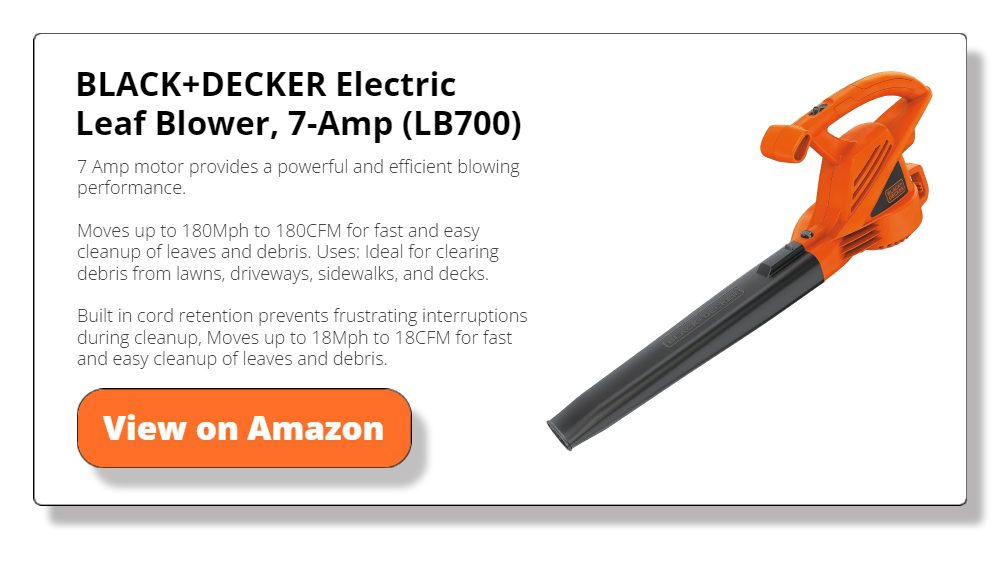
Safety First
Before climbing ladders, consider safety throughout gutter maintenance. Taking the right steps keeps you out of harm’s way.
Ladder Safety Tips
Choosing the right ladder is the first step in staying safe. Ensure your ladder is sturdy and extends at least three feet over the roof edge. This will give you the balance you need to work safely. Check that the ladder is on solid ground. A wobbly ladder can lead to accidents.
Before climbing, check for any damage to the ladder. Broken steps or loose bolts are danger signs. Always climb facing the ladder. Use both hands to grip the sides. Never carry tools while climbing; use a tool belt instead.
Keep your body centered between the ladder sides. Leaning too far to one side can make you lose balance. If you can’t reach an area, climb down and move the ladder. Spending extra time moving the ladder is better than risking a fall.
Protective Gear
Protective gear is a must-have for gutter maintenance. Gloves shield your hands from sharp objects. They also keep your hands clean when scooping out dirt and leaves. Pick gloves that are waterproof and snug-fitting for best results.
Eye protection is also important. Goggles keep out flying debris when you’re cleaning. Goggles are essential if you’re using a pressure washer or leaf blower. A hat can protect your head from falling objects.
Staying Grounded
Your feet should be firm on the ground when you’re not on the ladder during gutter maintenance. Always wear shoes that give you a solid grip on each step. Slippery shoes can lead to accidents, especially when it rains, or the gutter is clogged with wet trash.
Always check the area around the ladder. Keep it free from tools and debris. You don’t want to trip over something while carrying a ladder or walking around. Also, make sure pets and kids stay away from your work area. They can knock over the ladder or create other risks.
Weather Considerations
The weather will determine when you should check on your roof. Never do gutter maintenance during a storm or windy conditions. The ladder could tip over. Rain makes surfaces slippery, adding to the danger.
If it’s a hot day, make sure to stay hydrated. Take water breaks and rest in the shade during your gutter maintenance. Sunburn is another concern, so wear sunscreen and a hat. Cold weather brings challenges. Watch for ice or snow on the ladder or roof.
Frozen gutters are hard to clean and can be slippery. Always check the weather forecast before starting your gutter maintenance work.
Being cautious is about being smart about your health and property during gutter maintenance. Always put safety first to ensure your gutter maintenance is successful and injury-free.
Gutter Maintenance Inspection
Before diving into cleaning, take some time to inspect your gutters. Knowing their condition helps you decide what steps to take next. An inspection can show you what needs repair and a good cleaning.
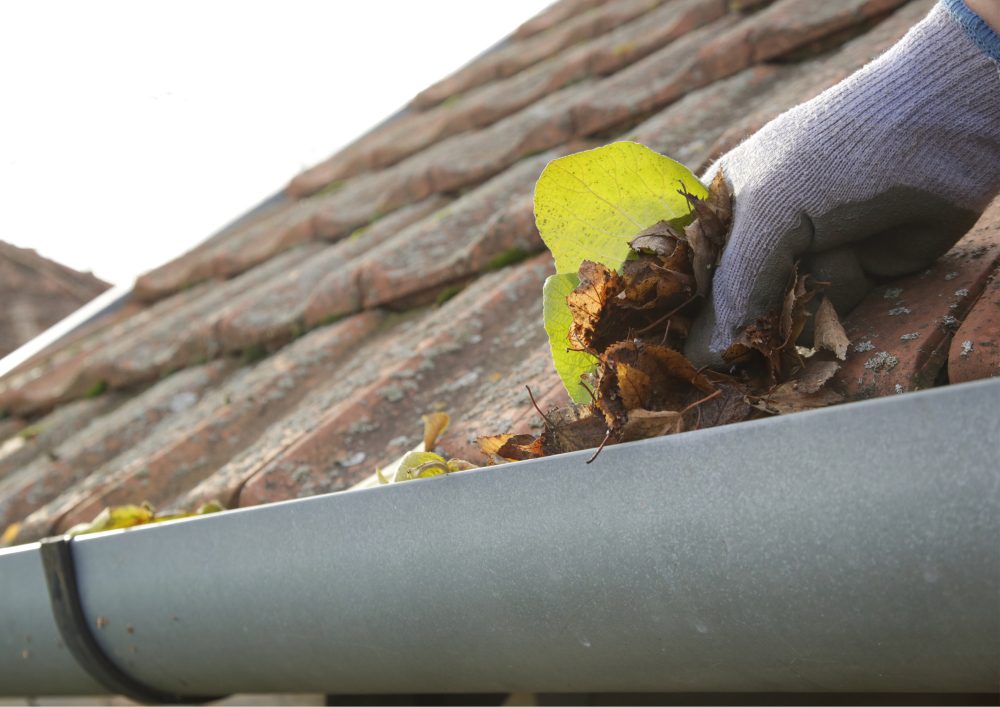
Clogs and Blockages
Clogs are areas where leaves, twigs, and other debris pile up in the gutter. They look like small dams inside the gutter, blocking the water flow. You might even see plants starting to grow from the debris.
If gutter maintenance is not regularly done, clogs can lead to water overflowing. This can damage the walls, foundation, and even your garden. In winter, the trapped water can freeze, causing even more blockage and damage.
Sagging Gutters
Sagging gutters are easy to spot. They pull away from the house or bend downwards. This happens when the gutters are too heavy with debris or water or the fasteners are loose.
Ignoring sagging gutters can be dangerous. Eventually, they could fall off, damaging your home and potentially causing injury. Sagging also prevents proper drainage, leading to more water issues.
Leaks and Holes
Leaks appear as trickles of water escaping from the gutter. Holes can be small or large, and you’ll often see water dripping from them. Sometimes you can spot these issues during a rainstorm.
These problems can lead to water damage on your home’s walls and foundation. Plus, the gutter itself could corrode faster, requiring full replacement sooner.
Rust and Corrosion
The rust looks like brown, flaky patches on the metal. Corrosion is more advanced decay, where the metal starts to wear away. Both are signs that the gutter material is breaking down.
Never ignore any signs of rust since it tells you how short of a time your gutters have. Over time, they can develop holes, leading to leaks. The entire gutter system might need replacing, which can be costly.
Poor Drainage
Poor drainage means water isn’t flowing freely through the gutter system. Instead, you’ll see puddles of standing water or areas where water spills over the sides of the gutters.
Problems with the water flow around your gutter can lead to expensive problems. These include water damage to your walls and foundation. Pooled water can also attract pests like mosquitoes.
Damaged Downspouts
Damaged downspouts show signs like dents, loose sections, or even holes. Water may spill from the sides instead of flowing down as it should.
If you don’t fix damaged downspouts, your drainage system can’t work right. This increases the risk of water damage to your home. Also, the pooling water can make slippery areas, leading to falls.
Inspecting your gutters tells you a lot. It shows where you need to focus your cleaning and repair efforts.
Cleaning the Gutters
After inspecting your gutters, you’ll likely find some dirt and debris. Now comes the fun part: cleaning them out. Below are the steps to take that will completely clear the debris for your gutter maintenance.
Removing Large Debris
The first step is to clear away any large mess you can pick up with your hands. This includes leaves, twigs, and anything bigger than your fingers. You can use a trowel or your gloved hands for this task. Scoop the debris and drop it into a trash bag. Make sure to start at the end closest to the downspout and work your way back.
Leaving large debris in the gutters can lead to clogs and poor water flow. This type of trash can also become heavy when it rains, damaging your roof if left alone. By removing these big pieces first in your gutter maintenance, you make the rest of the cleaning process easier and more effective.
Flushing the Gutters
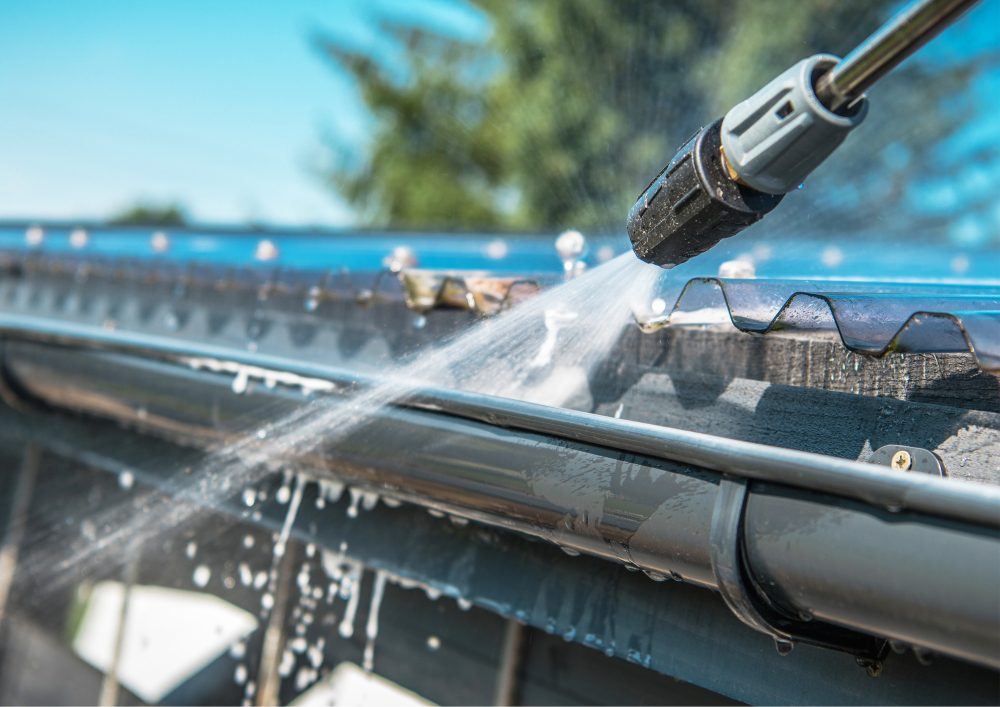
Once the large debris is gone, it’s time to flush the gutters. Use a hose to send a steady stream of water through the gutters. This helps to clear out any remaining small particles. Start at the opposite end of the downspout for this step and work towards it during your gutter maintenance.
If you don’t flush your gutters, small debris can build up and cause blockages over time. Flushing ensures that water can flow freely, which is the main function of your gutters. Take your time with this step since simple clogs can be removed. If your gutter has a persistent clog, we move to the next step.
Cleaning the Downspouts
Your downspouts need attention during your gutter maintenance. To clean them, detach them from the gutters and shake out any debris. You can also use a hose or pressure washer to flush them. Reattach them securely once they’re clean.
Be mindful when you detach your gutter. Make sure you are standing on solid ground or have a firm grip on the ladder when removing this structure. Start with the downspouts first since this is where clogs are mostly found. If you have a hard time removing the gutter or safety could be an issue, consider calling professional help.
Final Rinse and Test
After all the cleaning, give your gutters one final rinse. Use a hose to flush them one more time. This removes any remaining debris and tests if the gutters are draining well. Watch to see if water flows freely from the downspouts. Flushing your gutter again lets you further clean the gutter and see if there are any clogs you may have missed.
Gutter maintenance is a major part of your house maintenance. Clearing any obstruction to the rai water flow can protect your home. This is why you want to take as much time and effort to completely remove all debris in your gutter or hire a professional contractor.
Seasonal Tips
Different seasons bring different challenges for gutter maintenance. Whether it’s falling leaves in autumn or snow in winter, each season has its own set of rules. Here are some seasonal tips to help you stay ahead of the game.
Spring
- Check for winter damage like cracks or leaks.
- Remove any debris that is collected over winter.
- Test the gutters by running water through them.
Summer
- Inspect for nests made by birds or pests.
- Tighten loose screws and fasteners.
- Make any needed minor repairs before storm season starts.
Autumn
- Clean gutters more frequently due to falling leaves.
- Install gutter guards to reduce the amount of debris.
- Check for any sagging or areas that need reinforcement.
Winter
- Make sure gutters are free of ice and snow.
- Inspect for any signs of ice dams, especially after snowfall.
- Check downspouts to ensure they’re diverting water away from the home.
With these seasonal tips, you can handle whatever nature throws your way.
Conclusion
Gutter maintenance might seem like a chore, but it’s crucial for protecting your home. From the initial inspection to seasonal upkeep, each step is important. Following our guide to keeping your gutters clear lets you prevent any expensive leaks from ruining your home.








